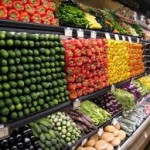Things are not always what they seem. Tropicana Orange Juice contains oranges from Brazil. Only certain brands actually use Florida oranges. But, virtually all Grapefruit juice is home grown in the USA. The presence of fungicides in orange juice from Brazil caused some folks to actually read food labels. But food labels are deceiving. In fact, they are designed to be deceiving. Labels such as “Not from Concentrate” and “100% Pure” mean absolutely nothing. Orange juice is heavily adulterated in most forms.
The USDA points out that only 15% of the Apple juice currently consumed in the United States is made with apples from our country. And where does the bulk of our apple juice supply originate? In China, where the apples made to make the juice are considered unacceptable for eating. Or, to put it another way, we feed our children juice from apples the Chinese refuse to eat.
Olive Oil “Made in Italy” simply means that there is a factory where olives from Morocco or Greece are packed in bottles in a process that takes place on Italian soil. over 90% of the “Made in Italy” olive oil sold in the United States is made from olives sourced from outsside Italy. Oh, one other small thing. Olive oil spoils quickly. It should be consumed within six months of its bottling date after which it begins to turn rancid. If there is no bottling date on the label, the oil should be avoided.
So-called Parmesan cheese, the grated kind in every kitchen cabinet in America, is made in Venezuela. I*f you’re lucky, your brand may be made in Germany. Authentic Parmesan cheese from Italy is just too expensive to be included in the cheese toppings we buy off supermarket shelves.
 One of the major differences between the American and the European approach to food is our intellectual laziness on the subject. We offer blind faith versus their food reason. In countries like Sweden, Germany, France, and Italy, supermarkets routinely indicate the source of their products and they are dealing with a far better educated consumer. In the US, for instance, signs proudly proclaim “fresh farm fish.” This usually means that fish swim in giant overpopulated pools, virtual bacteria cesspools. That is why farmed fish is less expensive then “wild caught”. Stores like Costco and Walmart sell frozen farmed fish from Thailand and Vietnam. Both countries have had serious levels of bacteria show up in their farmed fish population.
One of the major differences between the American and the European approach to food is our intellectual laziness on the subject. We offer blind faith versus their food reason. In countries like Sweden, Germany, France, and Italy, supermarkets routinely indicate the source of their products and they are dealing with a far better educated consumer. In the US, for instance, signs proudly proclaim “fresh farm fish.” This usually means that fish swim in giant overpopulated pools, virtual bacteria cesspools. That is why farmed fish is less expensive then “wild caught”. Stores like Costco and Walmart sell frozen farmed fish from Thailand and Vietnam. Both countries have had serious levels of bacteria show up in their farmed fish population.
We also include fish in our diet who are known bottom feeders. This tends to mean that the opportunity for bacteria to appear in the fish is dramatically heightened. Think Tilapia, to use one prominent example.
Then there is bread. Why does it taste so good when we travel? This is an area where, it must be said, we are making great progress and the Foodie Movement is creating a desire for a better product. But operating a city bakery that turns out authentic bread is a tough road to buisness success. When purchasing or ordering bread, the rule of thumb is that it ought to have only four ingrediants: Flour, Salt, Water and Yeast. If the label goes much beyond that you are eating fake bread.
No one has ever launched an “Occupy Your Supermarket” movement and we can;t help wondering whjy since the health of our loved ones is clearly at risk and mislabeling is the methodology of those who prey on our food ignorance.
